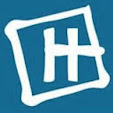Mood boards are a critical step in our process. They allow us to capture the visual essence of a brand or project in a realm that is somewhere halfway between real and imagined. It allows us to help clients tap into their own creative vision and communicate their intentions and feelings much more clearly than words will sometimes allow.
Snippet of a mood board for our client, Casana, which helped shape the brand.
The mood board process helps us creatively as much as it help the client understand a direction. In our creative process, going through tons of visual inspiration will help shape the intangible concept in our head. Image after image starts to refine and idea and construct a direction that ultimately guides where we go with the brand — from storytelling, statements, and print collateral like brochures, packaging and stationery, to online material such as websites. The mood board helps get all the ideas in front of us.
A snippet of our mood board for drip pop
With everyone picturing the same visual universe, we find projects move forward more efficiently. Instead of spending round after round of revisions to nail down design direction, we can spend more time executing the special details that make a project one of a kind. It might mean having extra time to add 3D renderings [check out helium reality for more on this]. Other times, a streamlined creative development process may allow sales efforts to launch sooner, a quicker transition between temporary and permanent websites, or the addition of special finishes on printed pieces and animations on digital elements.
A snippet of our mood board for ROK Hotel and Residences
So, what goes into a mood board? That’s both the fun part and, perhaps, the most challenging. If a picture is worth a thousand words, then it easily takes a thousand [or more] pictures to convey an idea as complex as an experience, an idea, a destination, or a home. We comb through a gross amount of images in magazines, websites, books, and everyone’s favorite: Pinterest. We’ve got our own bank of photographs and items we’ve collected of the years.
Mood boards are made up of collected items on Discovery trips and travels as well.
We scan what the competition is doing and look for uncharted territory. We sketch on notepads. We take our own photos of things that inspire us. We start arranging things together in a composition. We see what other team members think. We switch things in and out. And then… we walk away for a while and see what still strikes us as powerful and unique. After we’ve done all that about a dozen times [usually more], our clients get a chance to dive into the mood board themselves. It’s at that point that our role shifts from creators to listeners and observers. What was the initial reaction? Positive? Awe-inspired? Energized? Which elements are getting the biggest and best responses? Is it color? Camera angle? Something else? The mood board brings all of this to the forefront and becomes the anchor point for everything that comes next.






0 comments: